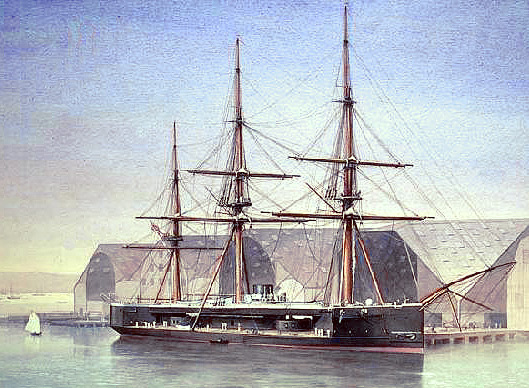Emma May died aged 48 in 1895, and is buried in plot W2 55 in the Anglican section. There is no stone and no loving monumental inscription because this is a public, or common, grave. Emma May was a widow and her address is given as 192 Hanover Street.
192 Hanover Street was also the address of William Watson, an anvil maker and his two children, Elsie, 11, and Charles 7. Emma May is described as the housekeeper in the 1891 census. Also in the house are William May 23, a printer compositor, and Frederick May, 21 a wine merchant’s porter. They are both described as ‘lodgers’. All the Mays were born in Torquay, Devon. Emma, in a public grave, might not have been picked up by the research team, except for the fact that a descendant enquired about her in 2006, surprised that she should have died so far from her roots.
Emma marries William Piper May
Emma, maiden name Barnes, had married William Piper May, an Ordinary Seaman in the Royal Navy, in 1864 in Newton Abbot, when he was 23 and Emma was 17. Their eldest son William was born four years later, and their second son Frederick in 1870, but William was lost at sea on 7th September 1870 when the ship on which he was serving, the HMS Captain, capsized in a heavy squall, and went down in three minutes.
Emma becomes a widow
The ship, of a new design, was on her fourth trial voyage, travelling in company with ten other ships. According to the Hastings and St Leonards Observer 17 Sept 1870, not a single officer survived the disaster. At least 473 men died. Captain Cole, the designer, also died. At the official inquiry, some of the 18 surviving crew members suggested that ‘iron masts and the heavy armoured turret, with its six 25 tonne guns, rendered the ship top heavy.’ The official verdict found that ‘ the ship had been capsized by the pressure of sail, assisted by the heave of the sea, but that such sail would not have been sufficient to endanger a vessel endowed with the proper amount of stability. The Court further found that ‘there had been great departure from the original designs, whereby the draught water had been increased two feet, and her freeboard diminished to a corresponding extent’. (Hampshire Telegraph 10th September 1904). It was a Portsmouth ship and in one street alone thirty wives were widowed by the disaster. The loss of the HMS Captain attracted nationwide sympathy and a fund set up for the relief of the families of those drowned.
The tragedy left Emma alone at 23, with a small naval pension, and two tiny children to support. The 1871 census shows her still in Torquay and her occupation is listed as ‘milliner’. The 1881 census shows that both William,13, and Frederick,11, are boarders at the Royal Patriotic Asylum for Boys, Wandsworth Common. The Royal Patriotic Fund was inaugurated by Queen Victoria in 1854 during the Crimean War to collect donations on behalf of widows and orphans od soldiers, sailors and marines’ that had died during or as a result of the hostilities. Part of the money raised was used to establish the Royal Victoria Patriotic Asylum for Boys and a sister establishment for girls. However in 1881 it was decided to close the Asylum for Boys on financial grounds. The children in the school were found places in other institutions, or sent to carers with an allowance. It is not known what happened next to William and Frederick, or how and why the family came to Sheffield. Was Emma impelled to move far away from all sea faring associations? Or did she and her younger son accompany William, who had found an employment opportunity? Emma never remarried and it would seem, devoted her relatively short life to her sons’ welfare. 1901, William, still a printer and compositor, was married with a 2 year old son, William, and a William May died in Sheffield in 1941. It is not known what happened to Frederick, but a Frederick May died in Plymouth in 1958.




